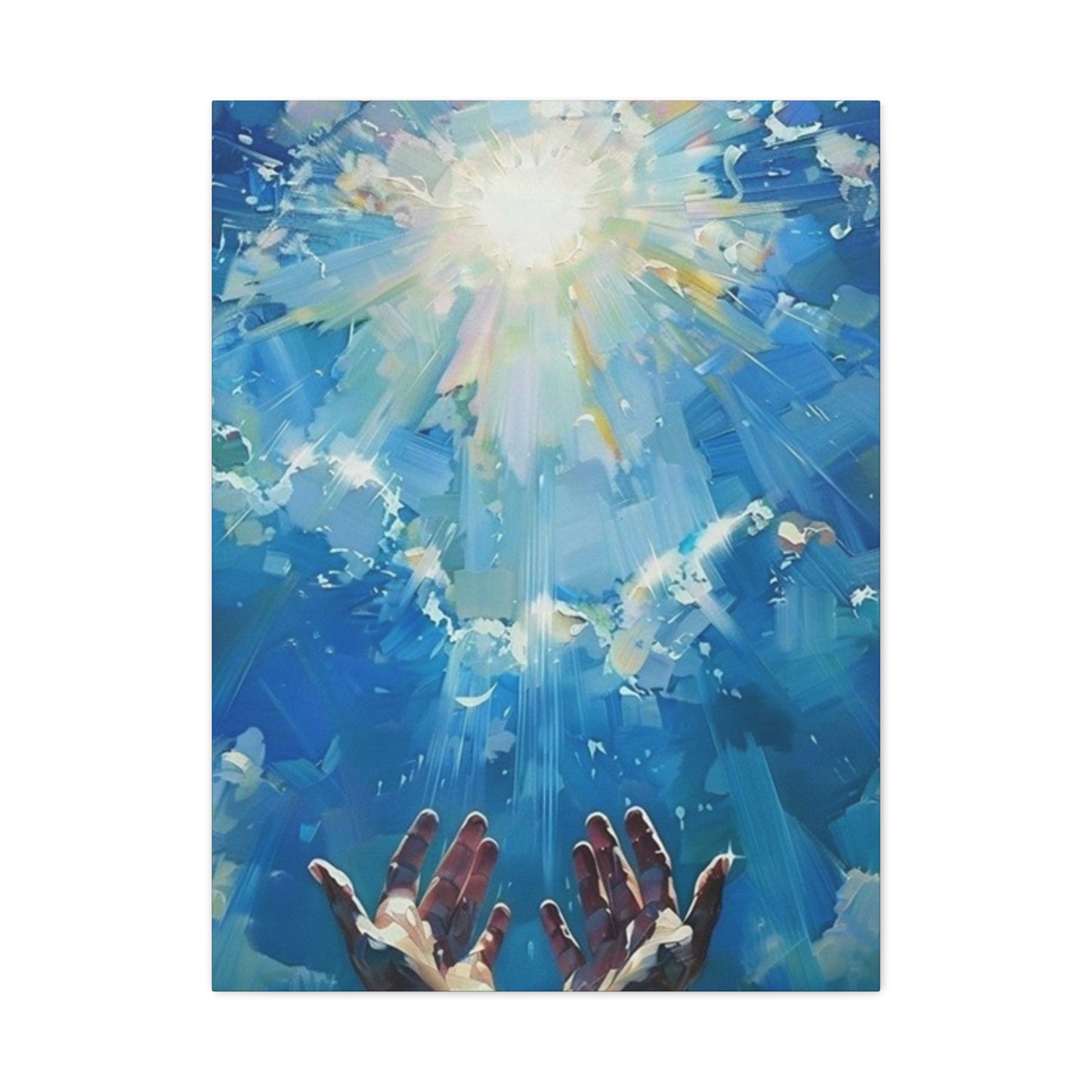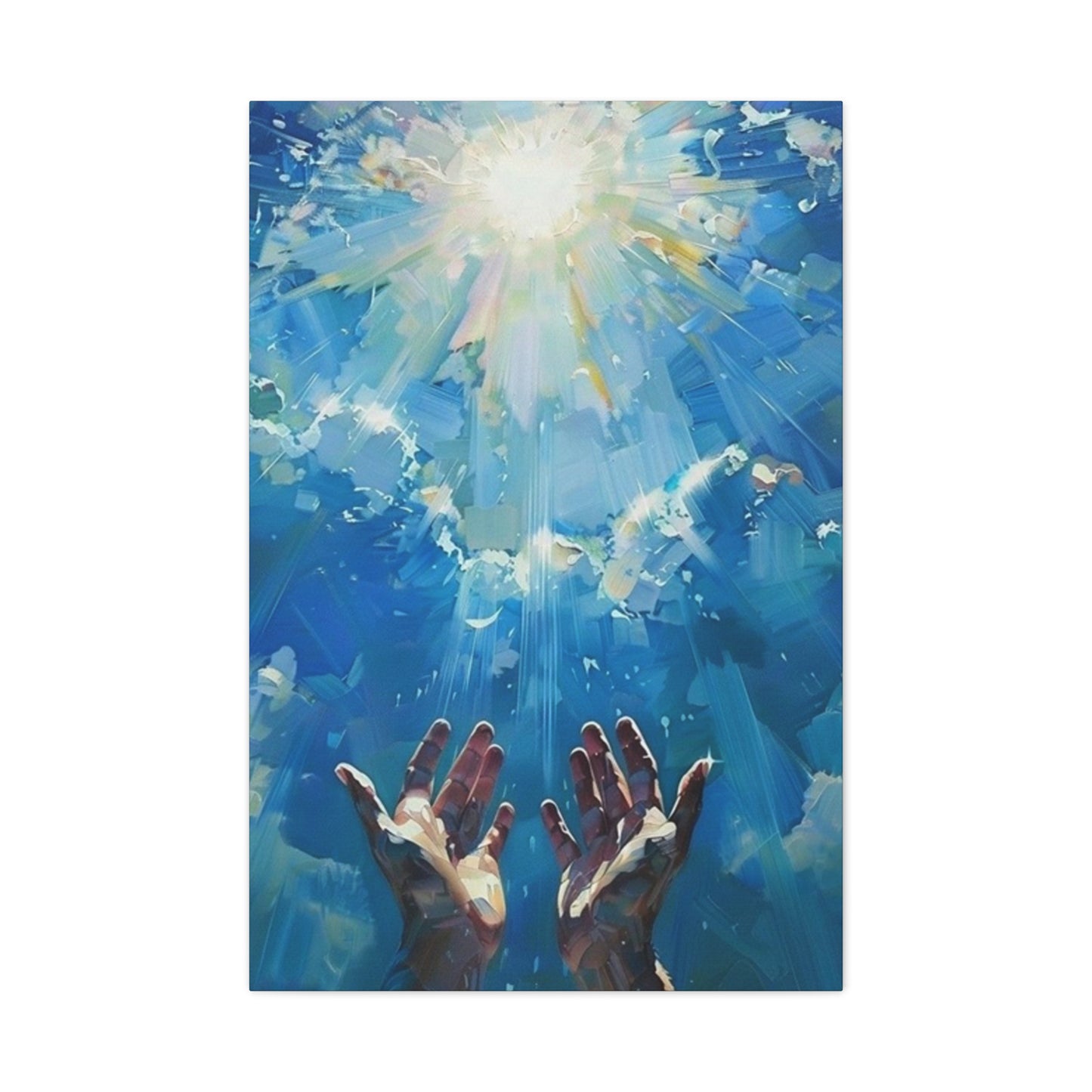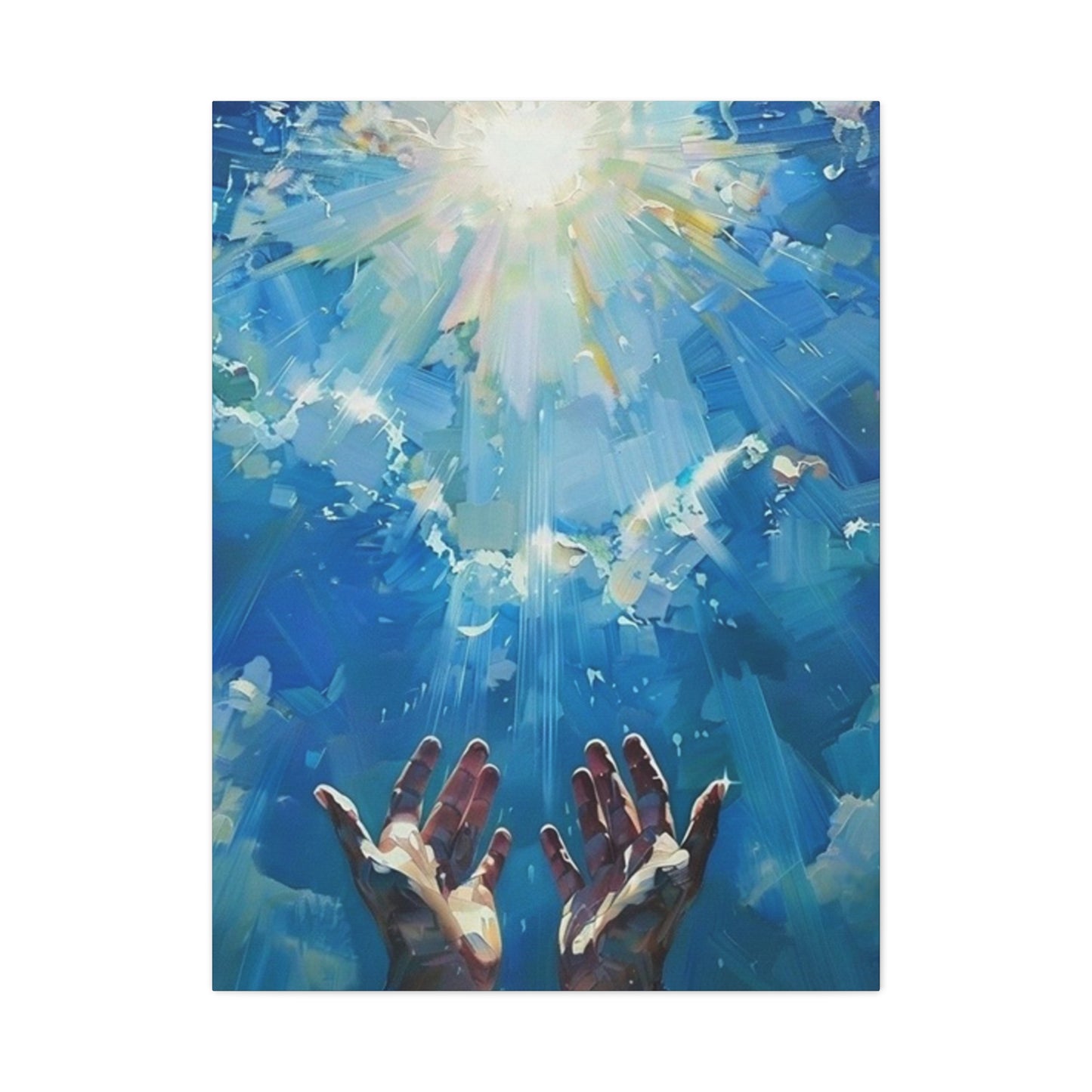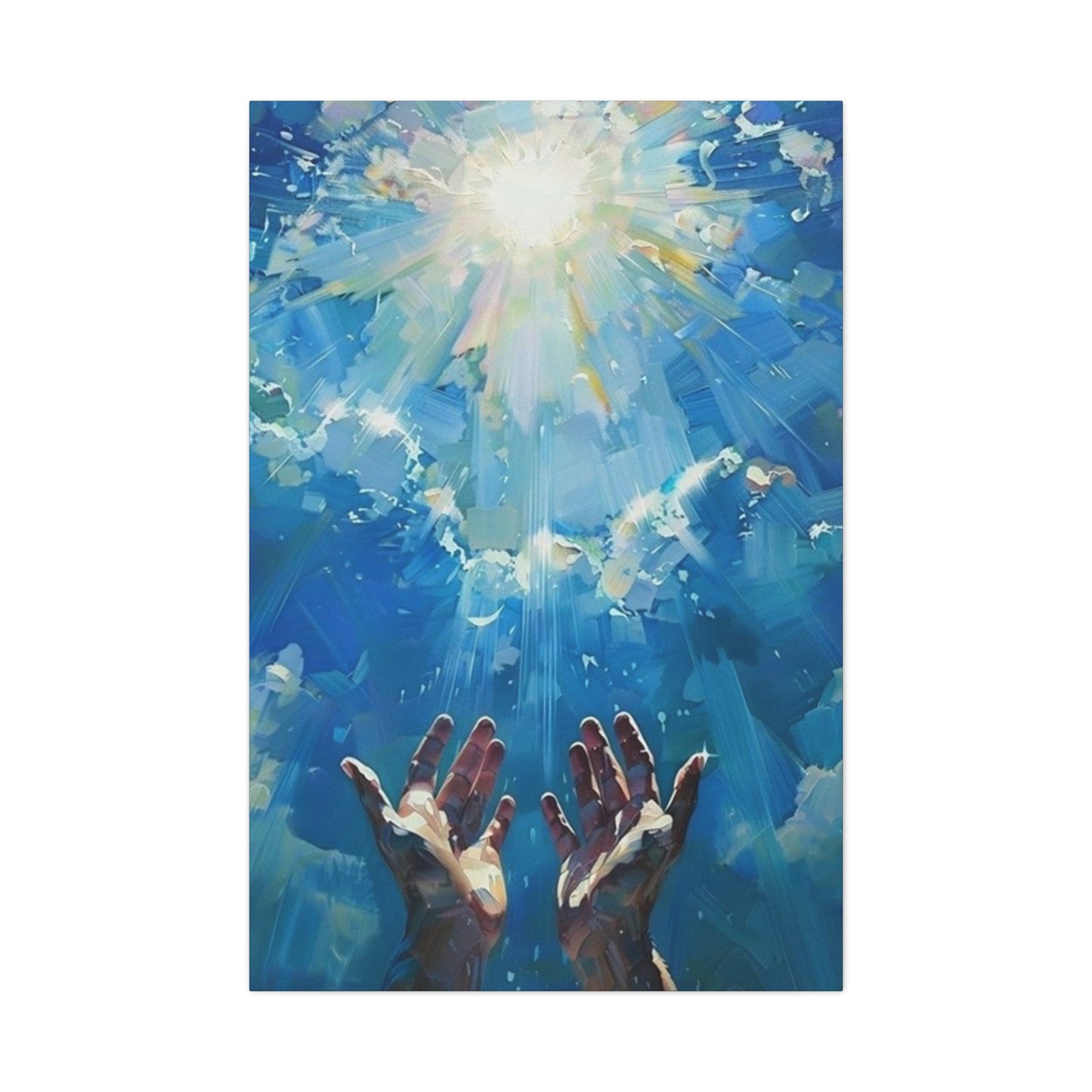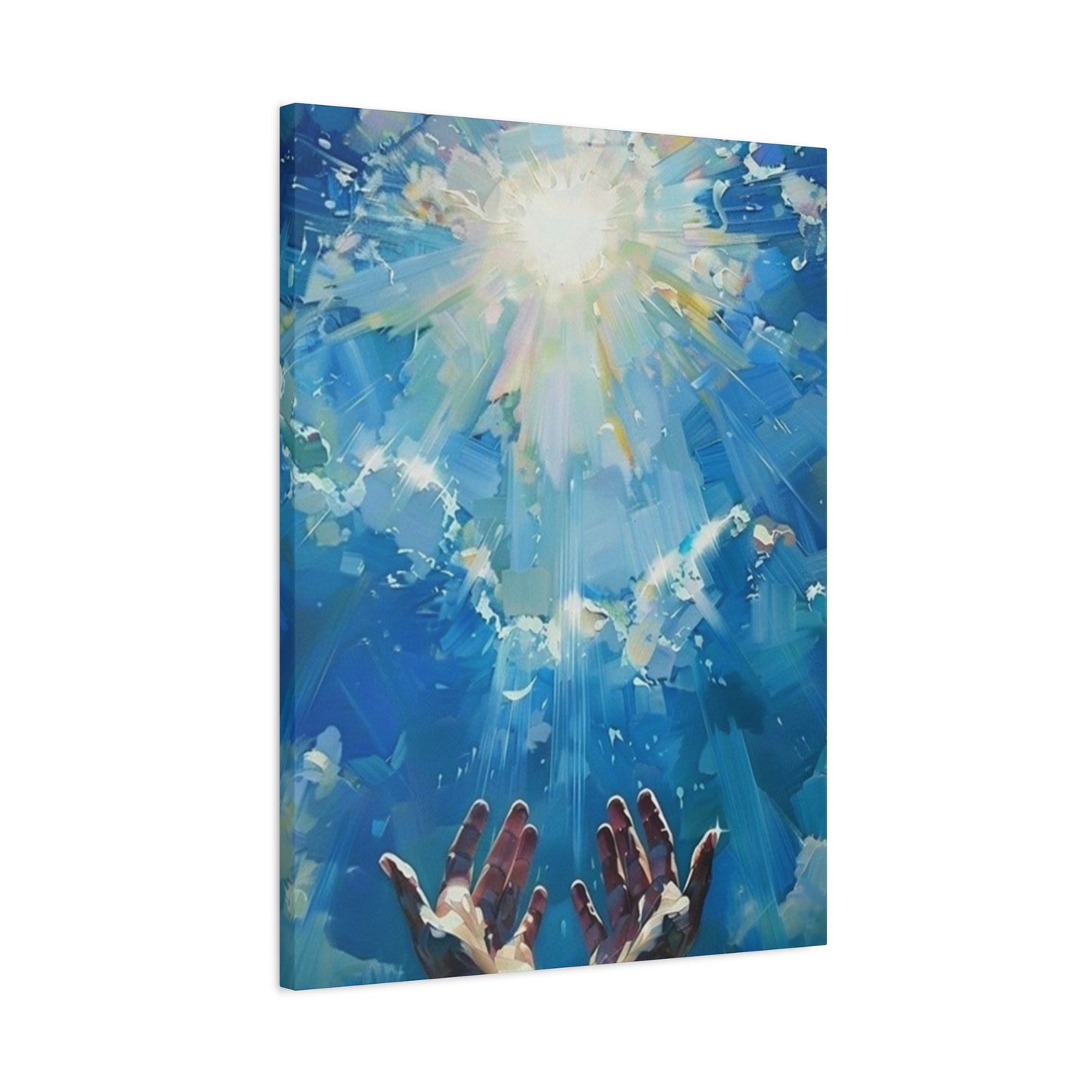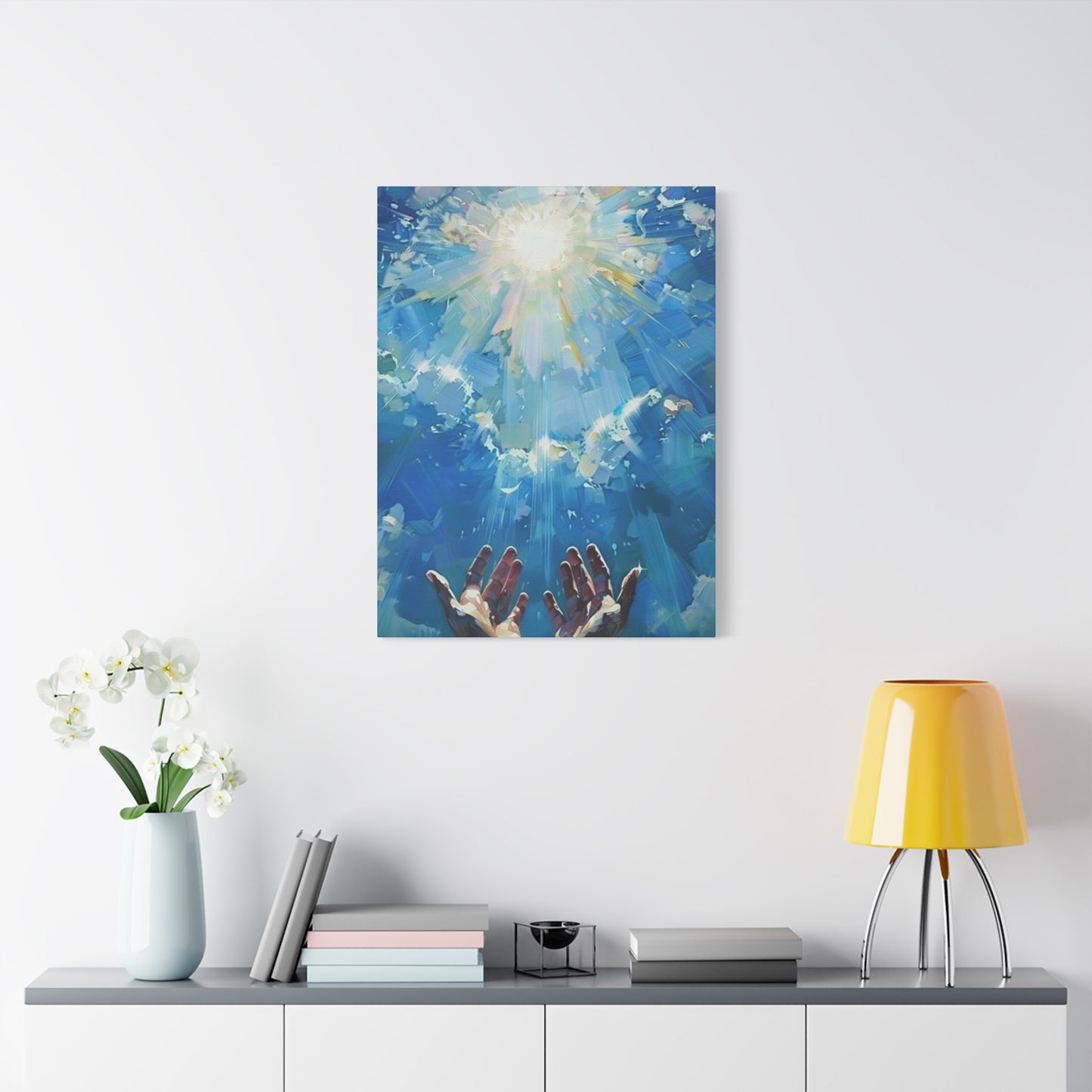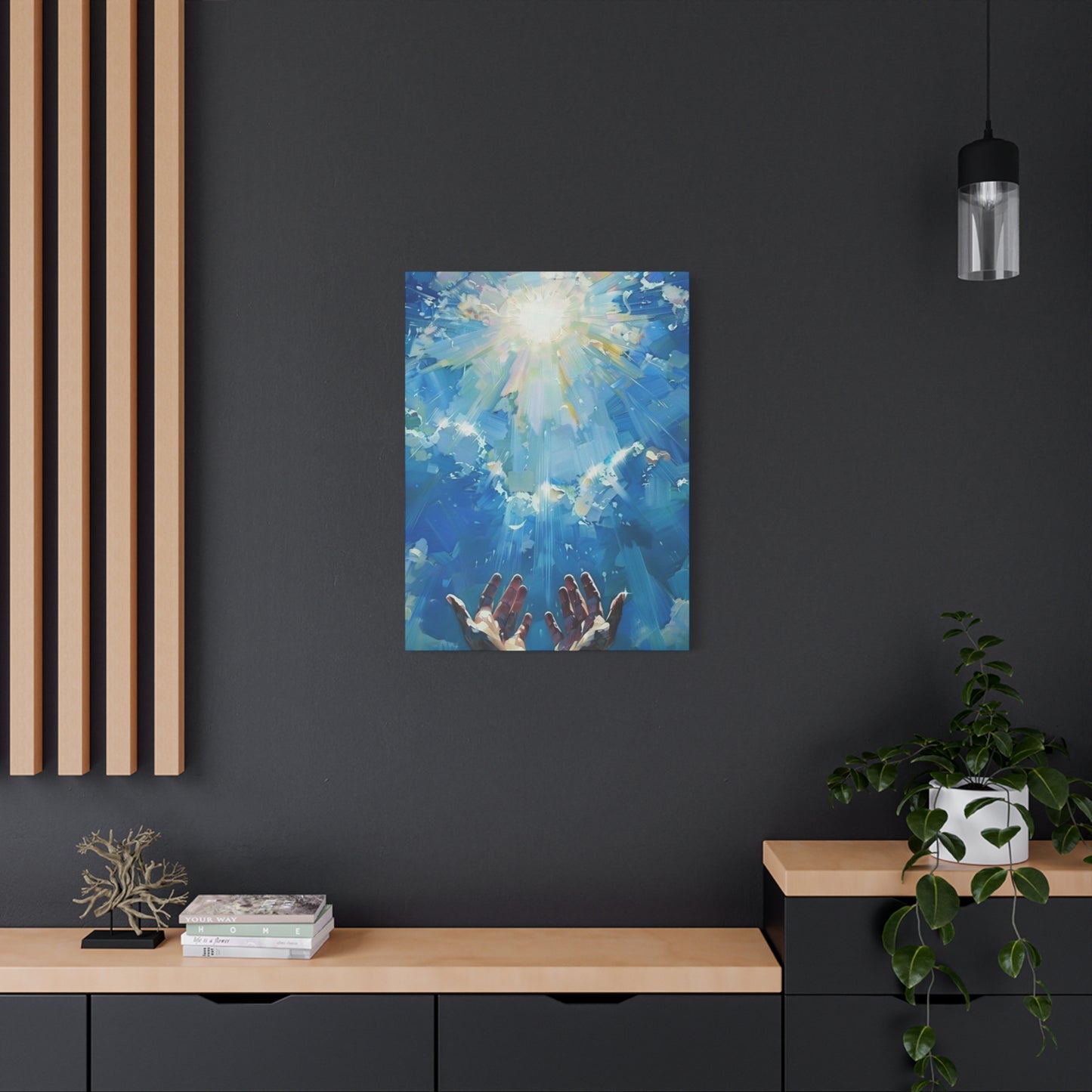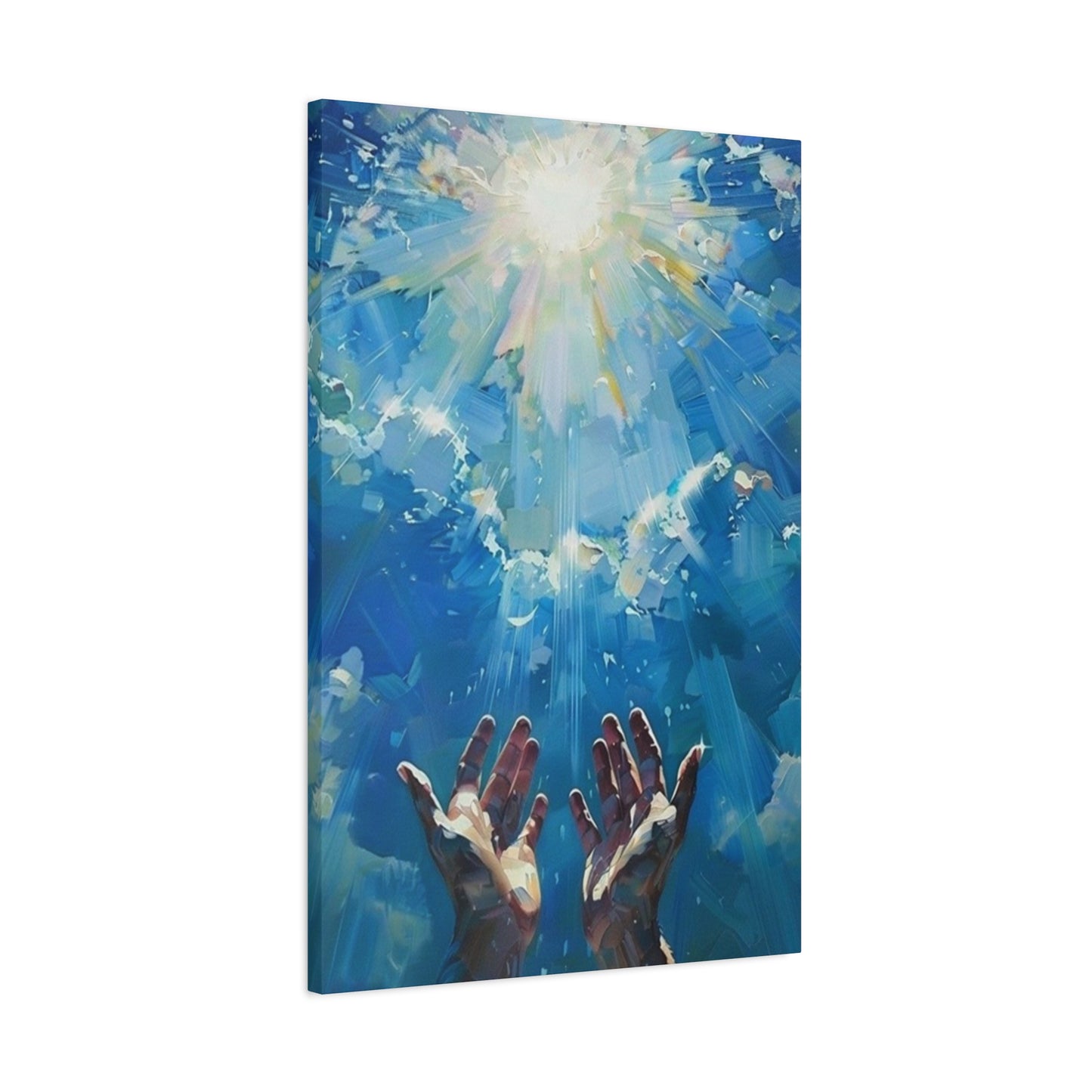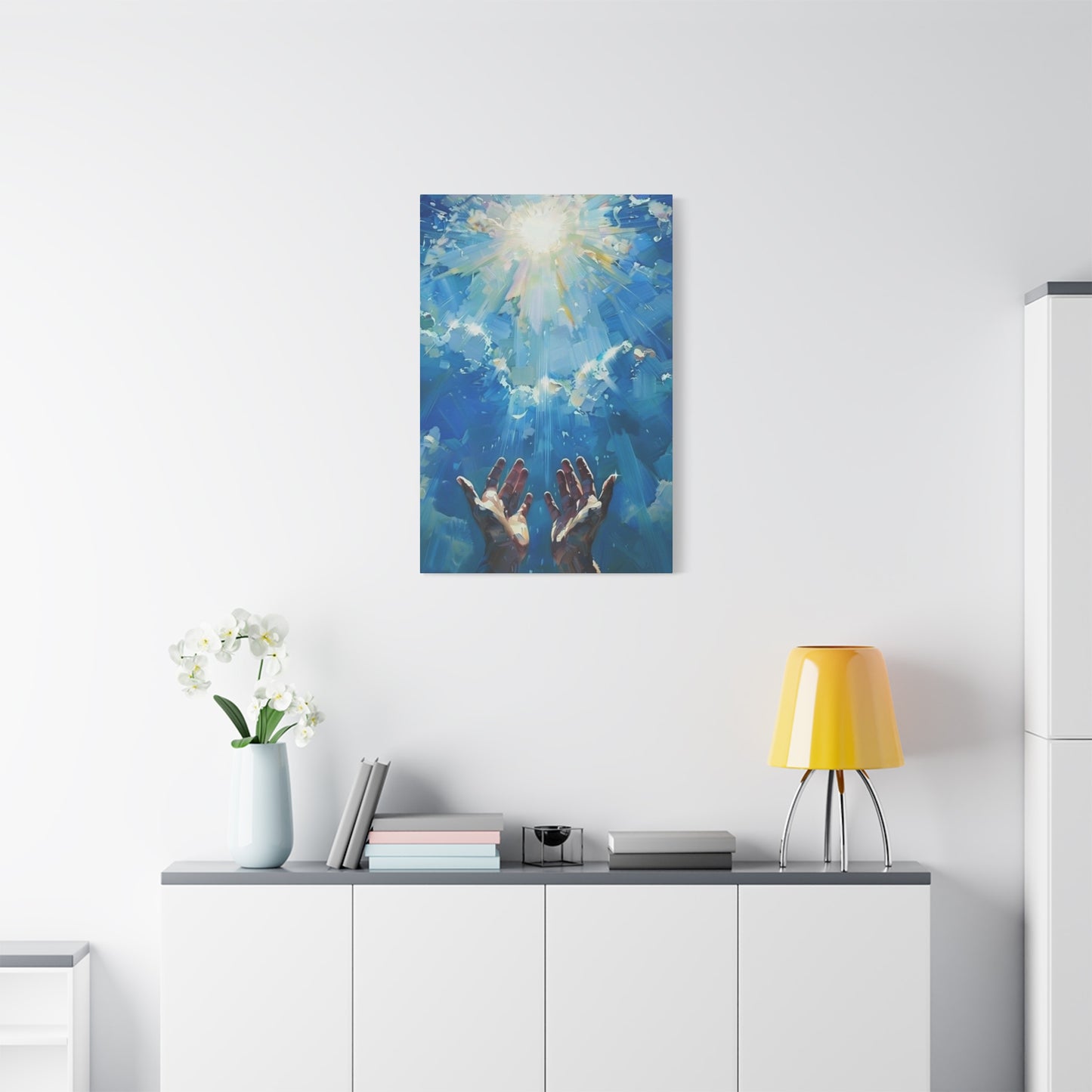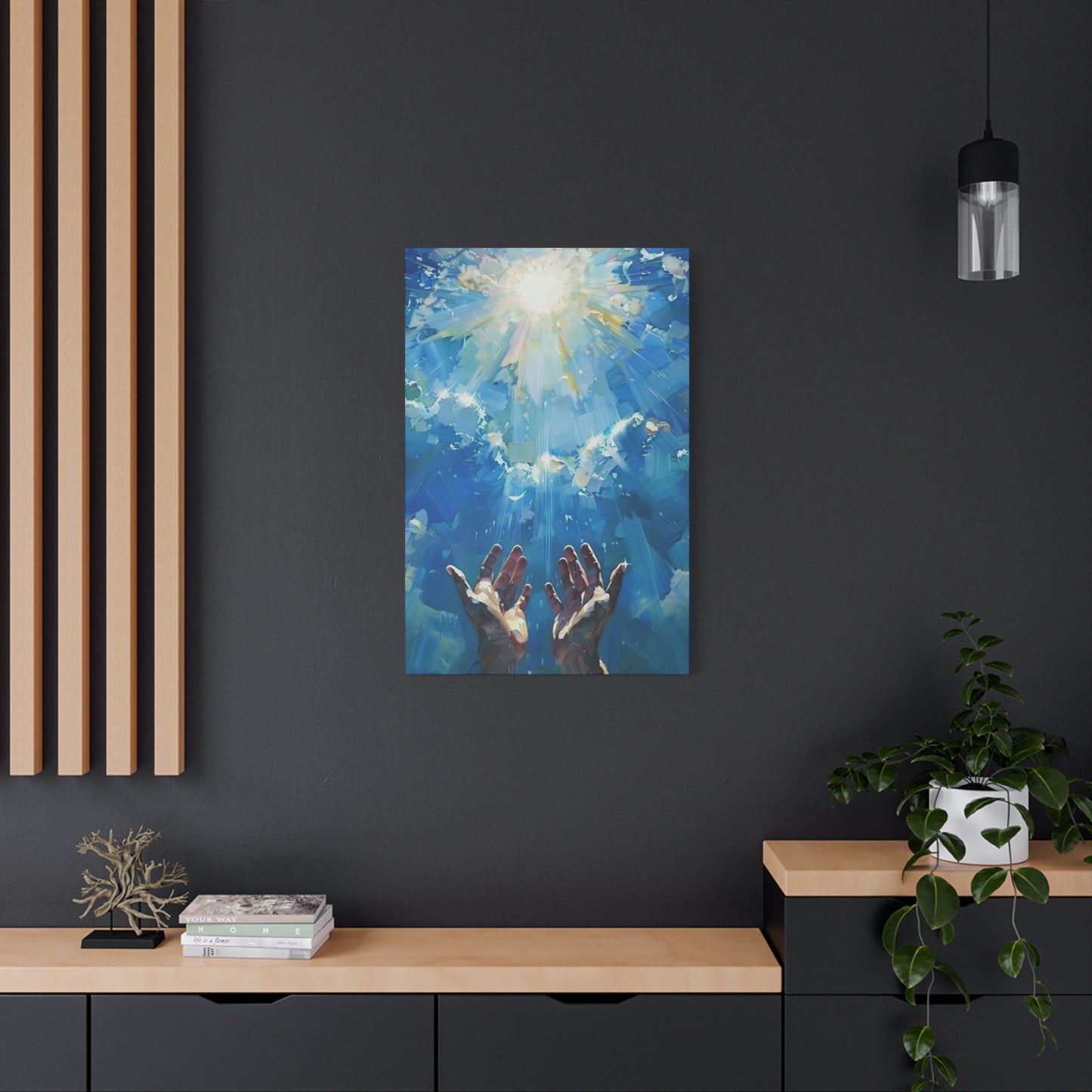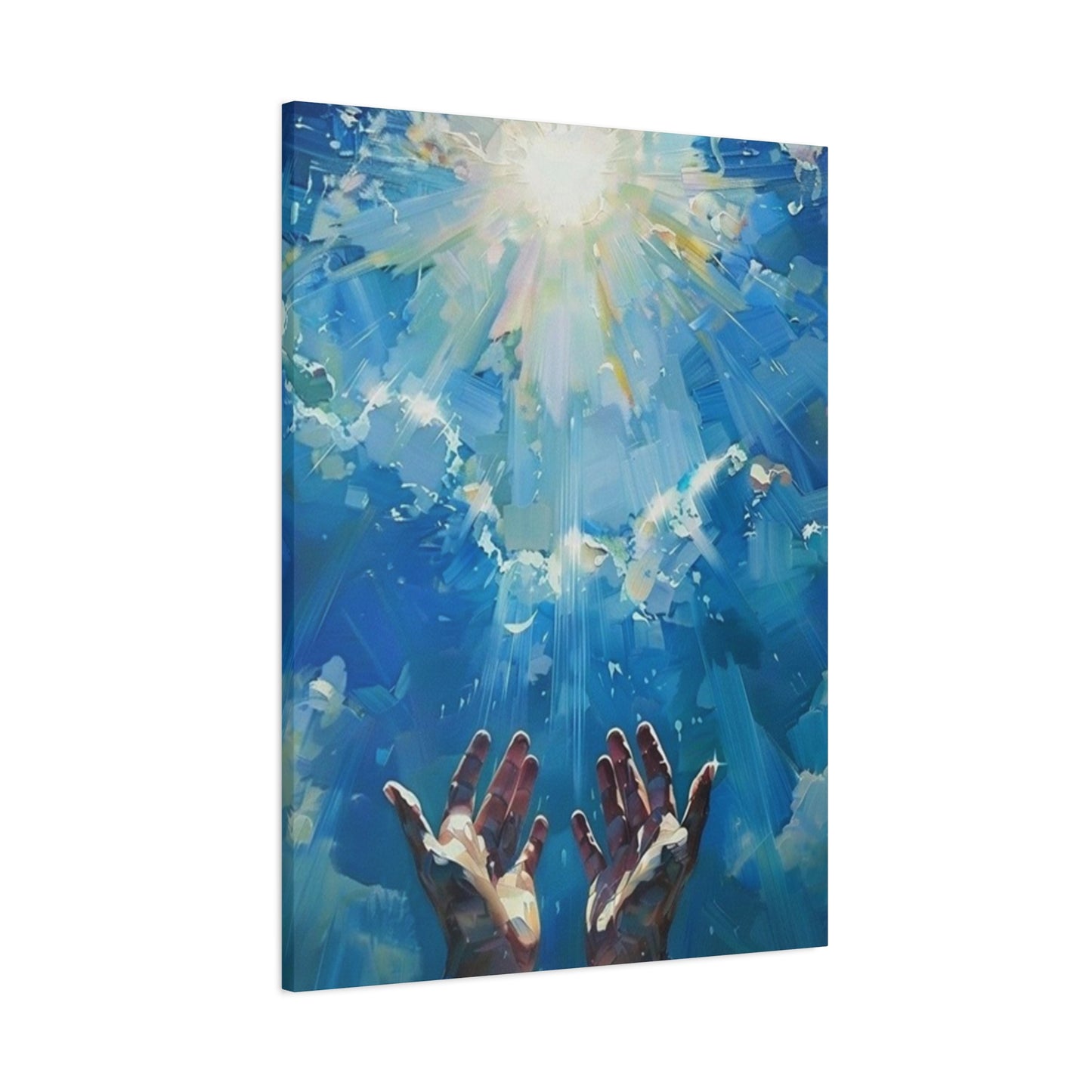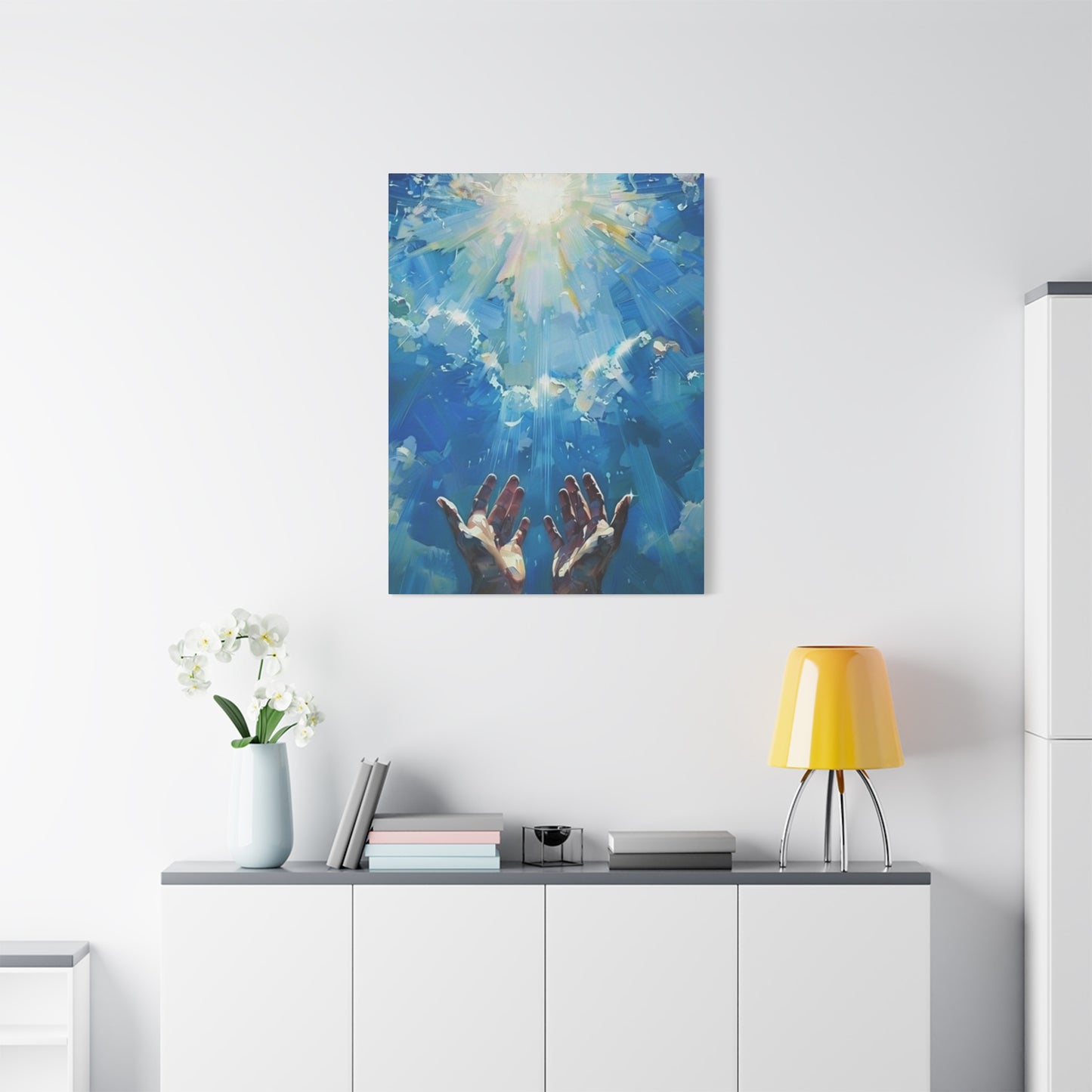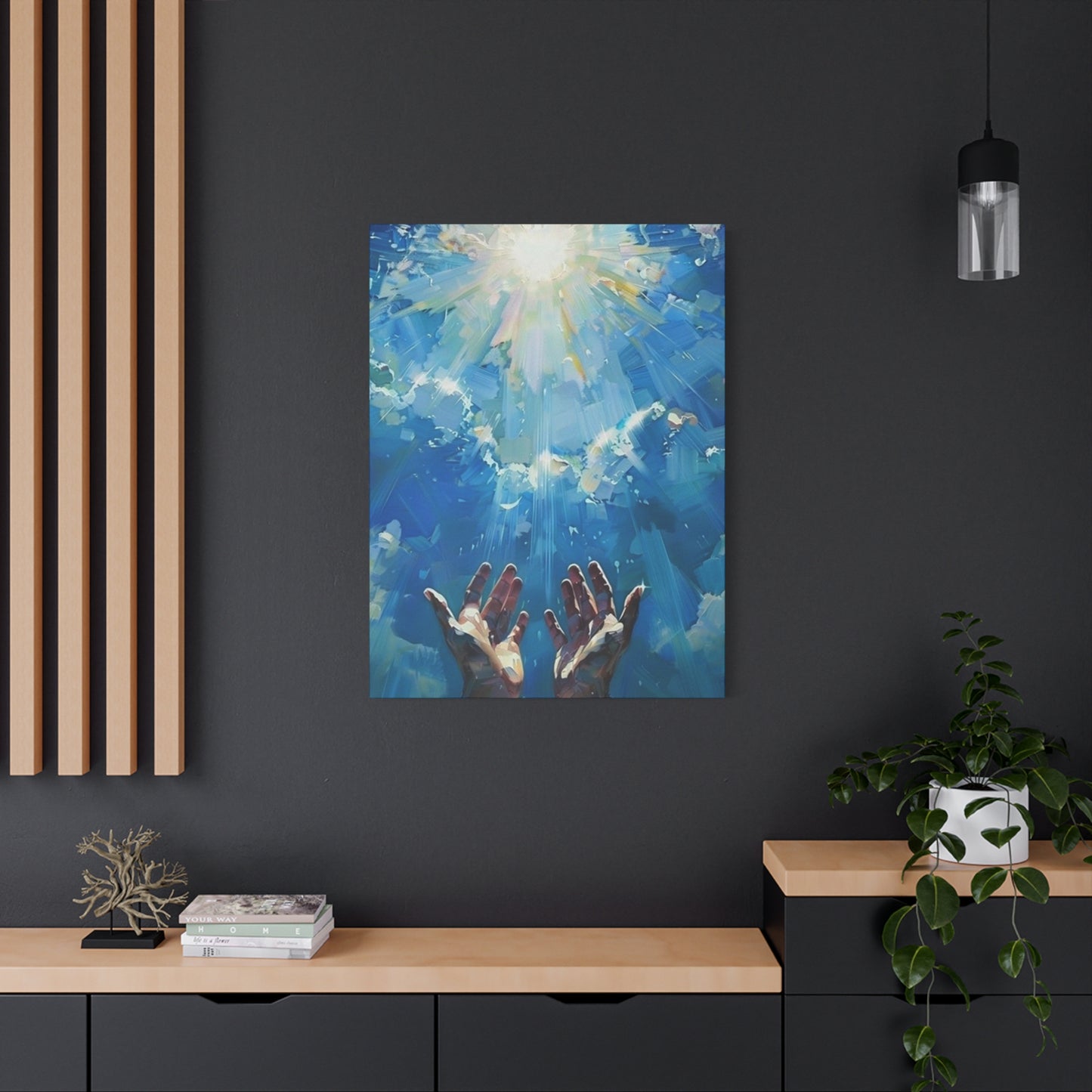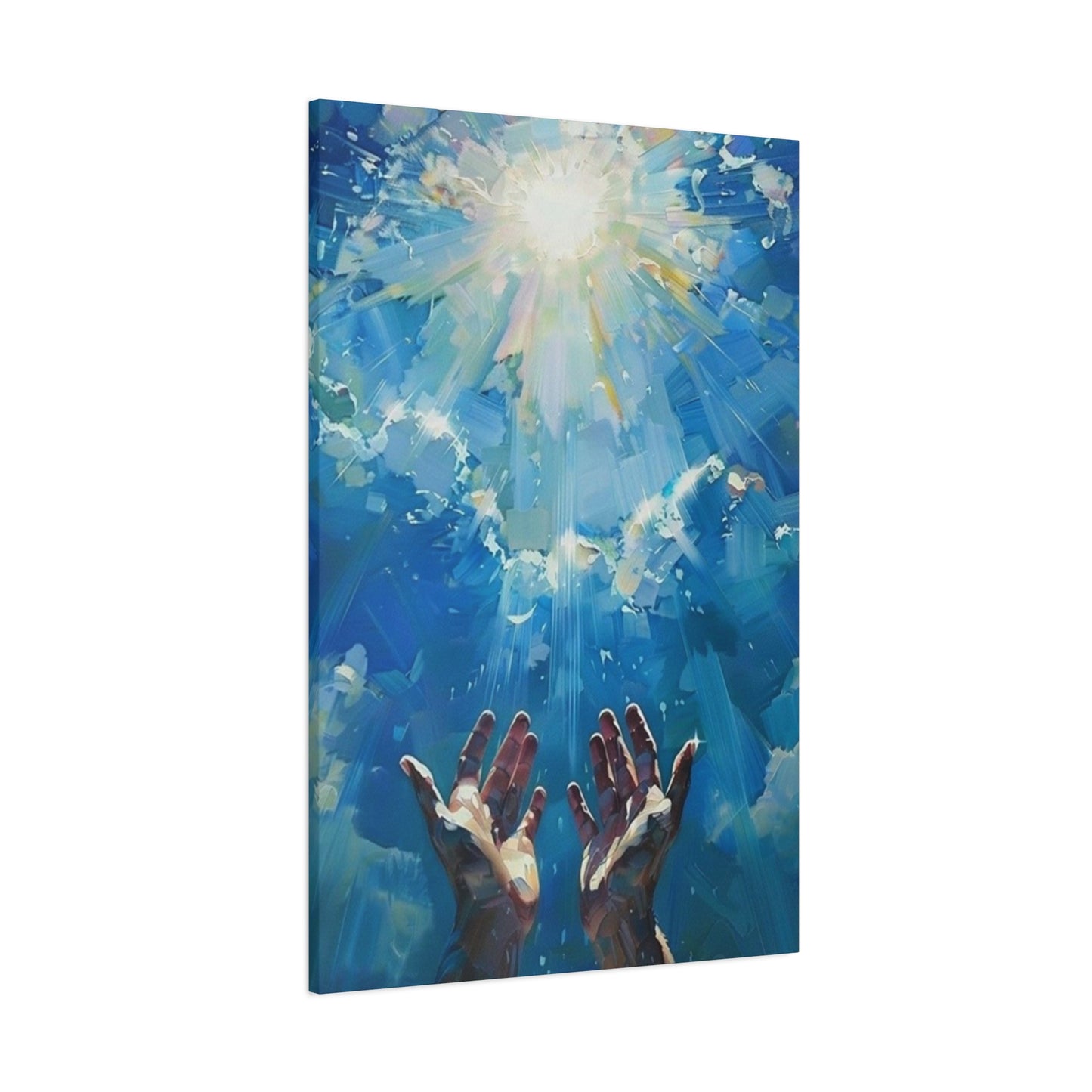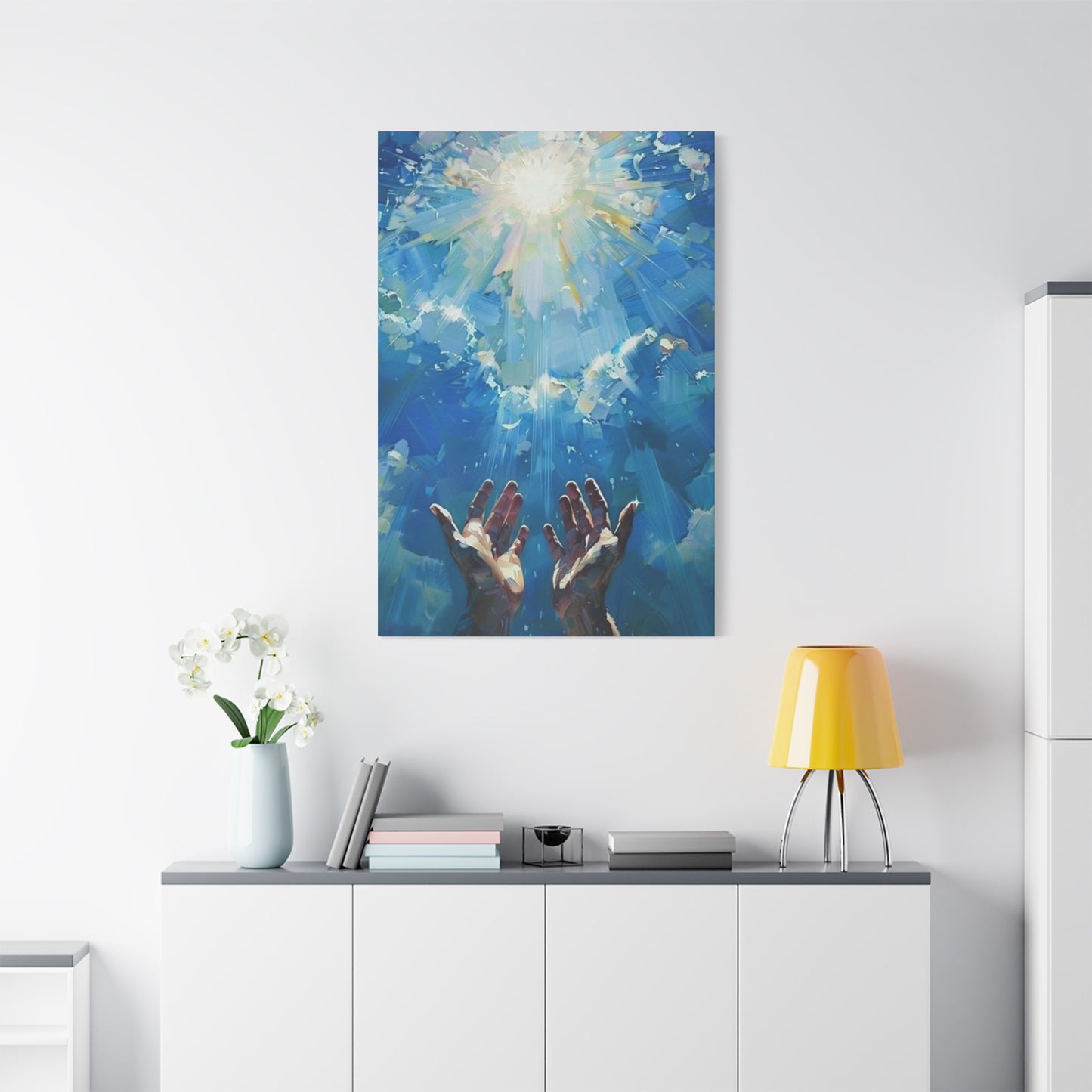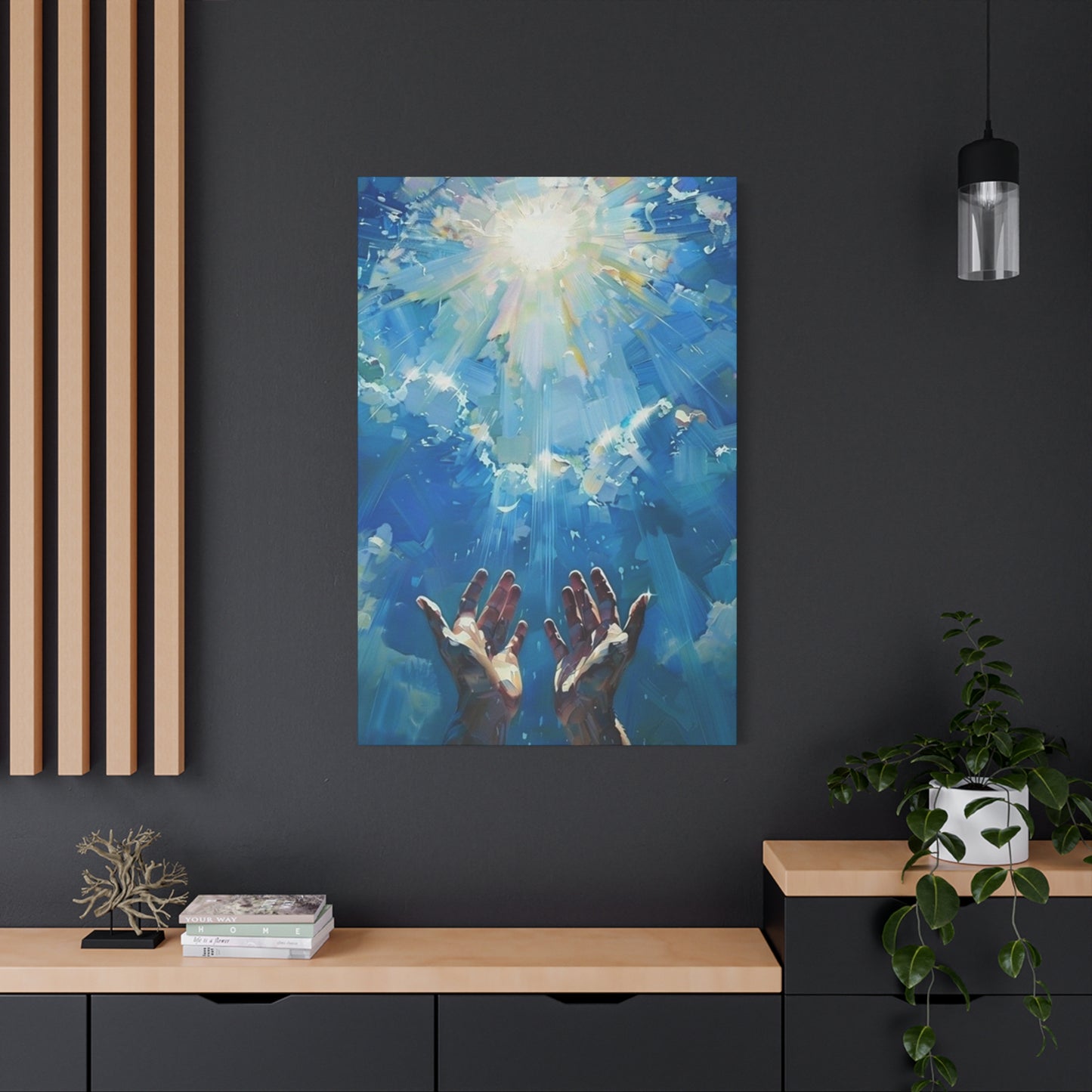Illuminating Faith: God Light Hope Wall Art for Sacred Living
The profound connection between divine illumination and hope has captivated humanity for millennia, creating a timeless bond that transcends cultural and religious boundaries. When we explore the realm of wall art that captures both God's light and hope, we enter a sacred territory where visual beauty meets spiritual nourishment. This divine combination offers more than aesthetic appeal; it provides a pathway to deeper contemplation, emotional healing, and spiritual growth within our living environments.
Divine light hope wall art serves as a bridge between the earthly and the heavenly, transforming ordinary walls into windows of transcendence. These carefully crafted pieces invite viewers to pause, reflect, and reconnect with their faith while finding solace in moments of uncertainty. The artistic representation of God's light combined with symbols of hope creates a powerful visual language that speaks directly to the soul, offering comfort during challenging times and celebration during moments of joy.
The significance of incorporating such meaningful artwork into our daily surroundings cannot be overstated. When we surround ourselves with visual reminders of divine presence and eternal hope, we create environments that nurture our spiritual well-being and encourage continuous growth in faith. These artistic expressions serve as daily meditations, gentle reminders of God's unwavering love, and beacons of hope that guide us through life's journey.
God Light Hope Art Meaning
The symbolic representation of God's light in artistic expressions carries profound theological and spiritual significance that has evolved throughout centuries of religious art. Divine illumination in visual form represents the presence of the Almighty, the guidance offered to believers, and the transformative power of faith. When artists capture this concept in wall art, they create more than decorative pieces; they craft spiritual tools that facilitate prayer, meditation, and contemplation.
The meaning embedded within God light hope art extends beyond simple religious imagery to encompass universal themes of renewal, guidance, and divine intervention. Light, as portrayed in these artistic works, symbolizes knowledge, truth, and the banishment of darkness from our lives. It represents the moment when divine understanding penetrates human consciousness, bringing clarity to confusion and peace to troubled hearts. Hope, intertwined with this divine light, becomes the anchor that sustains believers through trials and tribulations.
These artistic interpretations often draw from biblical references where light serves as a metaphor for God's presence and guidance. From the burning bush that spoke to Moses to the pillar of fire that led the Israelites through the wilderness, divine light has consistently appeared as a symbol of God's active involvement in human affairs. Contemporary wall art that captures these themes continues this ancient tradition, making sacred concepts accessible to modern believers.
The psychological impact of viewing such meaningful artwork cannot be underestimated. Research in environmental psychology suggests that surrounding ourselves with positive, spiritually significant images can influence our mood, perspective, and overall well-being. When we regularly encounter visual representations of divine light and hope, our minds naturally gravitate toward optimism and faith, creating a positive feedback loop that strengthens our spiritual resilience.
Artists who specialize in creating God light hope wall art often describe their work as a form of ministry, using their talents to spread messages of faith and encouragement. These creators understand that their artwork will occupy sacred positions within homes, offices, and worship environments, making their responsibility to convey authentic spiritual meaning all the more significant. The careful selection of colors, composition, and symbolic elements reflects this understanding and dedication to spiritual authenticity.
The interpretation of divine light in art also varies across different Christian traditions and denominations, each bringing unique perspectives to the visual representation of God's presence. Orthodox iconography, with its golden halos and luminous backgrounds, offers one approach to depicting divine light, while contemporary Protestant art might employ more abstract representations of the same spiritual concepts. This diversity enriches the overall landscape of hope wall art, providing options for believers from various theological backgrounds.
Best Places for Hope Wall Art
Selecting the optimal location for hope wall art requires careful consideration of both practical and spiritual factors that influence how these meaningful pieces will be experienced and appreciated. The placement of divine light artwork can significantly impact its effectiveness as a source of inspiration and comfort, making location decisions crucial for maximizing the spiritual benefits these pieces offer.
The entryway of a home presents an excellent opportunity to establish a welcoming atmosphere infused with hope and divine presence. When guests and family members enter, they immediately encounter visual reminders of faith and optimism, setting a positive tone for their visit or daily return home. Hope wall art positioned near the entrance creates a threshold experience, marking the transition from the external world's challenges to the sanctuary of a faith-filled environment.
Living areas naturally become gathering places where families and friends share experiences, making them ideal locations for displaying hope artwork. These communal environments benefit from the presence of uplifting imagery that can spark conversations about faith, provide comfort during difficult discussions, and serve as focal points for impromptu moments of prayer or reflection. The strategic placement of divine light art in these areas ensures that its positive influence extends to all who occupy these important gathering locations.
Bedrooms offer intimate settings where hope wall art can provide personal comfort and encouragement during private moments of prayer, meditation, or quiet reflection. The last images we see before sleep and the first ones we encounter upon waking can significantly influence our mental and spiritual state throughout the day. Placing meaningful artwork in bedrooms creates opportunities for daily spiritual encounters that begin and end each day with reminders of God's love and faithfulness.
Home offices and study areas benefit tremendously from the presence of hope artwork, especially in today's world where many people spend significant portions of their day working from home. These environments can become stressful and overwhelming, making the presence of spiritually uplifting imagery particularly valuable. Divine light art in work areas serves as visual breaks that redirect attention toward faith and hope, providing mental and spiritual refreshment during demanding tasks.
Hallways and transitional areas, often overlooked in decorating schemes, present unique opportunities for creating spiritual journey experiences through the strategic placement of hope wall art. As family members move through these passages multiple times daily, they encounter repeated opportunities for brief spiritual connections and reminders of faith. These fleeting but frequent encounters can accumulate into significant spiritual benefits over time.
Kitchen and dining areas, where families often gather for meals and meaningful conversations, provide natural settings for hope artwork that can inspire gratitude and thanksgiving. The presence of divine light imagery in these nourishment-focused areas creates connections between physical and spiritual sustenance, reminding us that our daily bread comes from God's provision and blessing.
Colors in God Light Art
The strategic use of color in divine light hope wall art plays a fundamental role in conveying spiritual messages and evoking appropriate emotional responses from viewers. Color psychology, combined with centuries of religious symbolism, creates a rich palette of possibilities for artists seeking to represent God's light and hope through visual means. Understanding these color associations helps both creators and collectors make informed decisions about artwork selection and placement.
Golden hues have traditionally represented divine presence and heavenly glory throughout religious art history. This warm, luminous color captures the essence of divine light mentioned in numerous biblical passages, from the golden lampstands in Revelation to the streets of gold described in the New Jerusalem. When incorporated into hope wall art, golden tones create an immediate association with the sacred while adding warmth and richness to any environment. The psychological impact of gold includes feelings of value, achievement, and divine blessing.
White and cream colors symbolize purity, holiness, and the perfection of divine nature. These colors reflect light beautifully, making them natural choices for artwork intended to represent God's illumination. White backgrounds in hope wall art create clean, peaceful atmospheres while allowing other colors and elements to stand out prominently. The simplicity and clarity of white also align with themes of spiritual cleansing and renewal that often accompany messages of hope.
Blue shades, particularly lighter tones, evoke feelings of peace, tranquility, and infinite possibilities. In religious contexts, blue often represents heaven, divine protection, and the Virgin Mary's purity and devotion. When used in God light hope art, various blue tones can create calming environments that encourage prayer and meditation. The psychological effects of blue include reduced stress, enhanced focus, and increased feelings of security and trust.
Soft purple and lavender hues carry associations with royalty, dignity, and spiritual transformation. These colors have long been connected to religious observance and penitence, making them appropriate choices for artwork intended to inspire contemplation and spiritual growth. Purple's combination of red's passion and blue's tranquility creates a balanced emotional response that supports both active faith and peaceful reflection.
Silver and pearl tones offer sophisticated alternatives to traditional golden colors while maintaining associations with divine light and celestial beauty. These cooler metallic shades work particularly well in contemporary settings where traditional gold might seem too ornate or formal. Silver's reflective properties symbolize the mirror-like quality of faith, reflecting God's light back into the world through believers' actions and attitudes.
Warm earth tones, including soft browns, tans, and sage greens, ground divine light artwork in natural beauty while maintaining spiritual significance. These colors connect heavenly themes to earthly experiences, reminding viewers that God's light illuminates our daily lives and practical concerns. Earth tones create comfortable, approachable atmospheres that make divine themes accessible to people who might find more dramatic color schemes intimidating.
The careful combination of multiple colors within single pieces of hope wall art allows artists to create complex emotional and spiritual experiences. Gradient effects, where colors blend seamlessly into one another, can represent the gradual dawning of divine light or the smooth transition from darkness to hope. Color harmonies based on complementary or analogous relationships create visual interest while maintaining the peaceful, uplifting qualities essential for spiritual artwork.
Hope Quotes for Wall Art
Incorporating meaningful quotations into hope wall art adds layers of spiritual depth and personal connection that pure visual imagery alone cannot achieve. These carefully selected words serve as anchors for meditation, sources of daily encouragement, and bridges between artistic beauty and scriptural truth. The most effective hope quotes for wall art combine theological accuracy with emotional resonance, creating pieces that speak to both heart and mind.
Biblical verses form the foundation of most hope wall art quotations, drawing from centuries of inspired text that has comforted and encouraged believers throughout history. Verses like "For I know the plans I have for you, declares the Lord, plans to prosper you and not to harm you, to give you hope and a future" from Jeremiah 29:11 provide specific assurances about God's intentions for our lives. These scriptural foundations give weight and authenticity to artistic expressions of hope.
Contemporary Christian authors and theologians have contributed powerful quotes that translate ancient wisdom into modern language and circumstances. Writers like Max Lucado, Joyce Meyer, and Rick Warren have crafted memorable phrases that capture essential truths about hope and faith in accessible, quotable formats. These modern expressions help bridge the gap between biblical language and contemporary understanding, making spiritual concepts more relatable to today's believers.
Historical religious figures, including saints, reformers, and spiritual leaders, offer time-tested wisdom about hope that has sustained believers through various challenges and eras. Quotes from figures like Saint Augustine, John Wesley, or Corrie ten Boom bring historical perspective and proven spiritual insight to contemporary wall art. These voices from the past remind us that hope in God has been tested and proven reliable across generations and cultures.
Inspirational quotes that focus on perseverance and overcoming obstacles resonate particularly well in hope wall art intended for challenging situations. Phrases that acknowledge difficulty while affirming God's faithfulness create realistic but optimistic perspectives that help viewers navigate tough circumstances. These quotes validate struggles while pointing toward divine solutions and ultimate victory through faith.
Personal mantras and affirmations based on biblical principles can be customized for specific individuals or families, creating unique hope wall art that addresses particular needs or circumstances. These personalized quotes might combine family names with scriptural promises, creating intimate connections between God's word and specific life situations. Custom quotations ensure that wall art speaks directly to the hearts and circumstances of those who will view it daily.
Poetry and hymn lyrics offer rich sources of hope-filled language that combines spiritual truth with artistic beauty. Traditional hymns like "How Great Thou Art" or contemporary worship songs provide familiar, meaningful text that many believers already associate with positive spiritual experiences. The rhythmic, memorable nature of these lyrics makes them particularly suitable for meditation and memorization.
The visual presentation of quotes within wall art requires careful attention to typography, spacing, and design elements that enhance readability while maintaining artistic appeal. Font choices should reflect the tone and content of the message, with elegant scripts conveying reverence and modern sans-serif fonts suggesting contemporary relevance. Color contrast between text and background ensures that quotes remain legible while contributing to the overall aesthetic appeal of the piece.
DIY God Light Wall Art
Creating personalized divine light hope wall art through do-it-yourself projects offers unique opportunities for spiritual expression while developing artistic skills and saving money on professionally produced pieces. These creative endeavors become acts of worship and meditation, as creators engage with spiritual themes through hands-on artistic processes. The personal investment of time and creativity often makes DIY pieces more meaningful and emotionally connected than purchased alternatives.
Canvas painting projects provide accessible entry points for beginners interested in creating their own hope wall art. Simple techniques like color washing, where diluted acrylic paints create soft, luminous backgrounds, can effectively represent divine light without requiring advanced artistic skills. Adding inspirational quotes using stencils or vinyl lettering transforms basic painted canvases into meaningful spiritual artwork that reflects personal taste and style preferences.
Mixed media approaches allow creators to incorporate various materials and textures that enhance the symbolic content of their artwork. Combining fabric, paper, metallic elements, and natural materials like sand or shells can create rich, tactile experiences that engage multiple senses. These layered compositions might include elements like sheer fabrics to represent the ethereal nature of divine light or metallic leafing to add luminous effects that catch and reflect actual light.
Digital design and printing technologies make professional-quality results achievable for creators with basic computer skills. Free and low-cost design software enables the creation of sophisticated layouts combining photography, typography, and graphic elements. Once designed, these digital creations can be printed on various materials including canvas, metal, wood, or high-quality paper, providing flexibility in final presentation options.
Woodworking projects offer opportunities to create hope wall art with rustic, natural appeal that connects divine themes to God's creation. Simple wooden signs with routed or painted text can be enhanced with staining techniques that highlight wood grain or distressing methods that create vintage, timeless appearances. More advanced woodworkers might incorporate relief carving or pyrography to add dimensional elements to their spiritual artwork.
Fabric and textile arts provide soft, comfortable alternatives to traditional hard-surfaced wall art while offering opportunities to incorporate personal and family elements. Quilting projects might combine meaningful fabric pieces with appliqué techniques to create hope-themed wall hangings. Embroidery and cross-stitch projects allow for precise, detailed work that can incorporate complex quotes and intricate symbolic imagery.
Photography-based DIY projects enable creators to capture personal images that represent hope and divine light in their own experiences and environments. Sunrise and sunset photographs, images of light streaming through windows or trees, or pictures of personally meaningful locations can be enhanced with inspirational text to create unique, personally relevant artwork. Digital editing techniques can enhance lighting effects and add text overlays for professional-looking results.
Upcycling and repurposing projects transform discarded or outdated items into meaningful hope wall art while practicing good stewardship of resources. Old windows can become frames for inspirational messages, vintage books can be altered into sculptural pieces, and discarded wood can be transformed into rustic signs. These environmentally conscious approaches align with Christian principles of stewardship while creating unique, character-filled artwork.
Hope Art for Home
Integrating hope artwork throughout residential environments requires thoughtful planning that considers both aesthetic principles and spiritual goals. The selection and placement of divine light themed pieces should create cohesive visual narratives that support family values while enhancing the overall beauty and comfort of living areas. Successful integration ensures that hope art feels natural and purposeful rather than randomly placed or overly dominant.
Kitchen environments benefit from hope artwork that connects themes of nourishment and provision with spiritual sustenance and gratitude. Pieces featuring harvest imagery, bread symbolism, or quotes about God's provision create natural connections between daily meal preparation and recognition of divine blessing. The practical nature of kitchen activities makes them ideal settings for artwork that reminds families to give thanks and recognize God's ongoing care.
Family room arrangements should prioritize hope wall art that encourages unity, shared values, and meaningful conversation. Large statement pieces positioned above mantels or main seating areas can serve as focal points that draw family members together while providing visual anchors for room design. These central locations ensure that hope-themed messages receive regular attention and consideration from family members and guests.
Children's areas require carefully selected hope artwork that communicates age-appropriate spiritual concepts while maintaining visual appeal for young viewers. Bright colors, friendly imagery, and simple, memorable quotes work best for these environments. Noah's ark themes, rainbow imagery, and gentle animal representations can convey messages about God's protection and care in ways that young minds can understand and appreciate.
Master bedroom suites offer opportunities for more intimate, personal expressions of hope and faith that speak directly to adult spiritual needs and concerns. Artwork in these private areas might address themes like marriage, partnership, rest, and renewal. The personal nature of bedroom environments allows for more vulnerable, emotional expressions of faith that might feel too private for public areas of the home.
Home offices and study areas need hope artwork that supports productivity, decision-making, and professional integrity. Pieces that emphasize wisdom, guidance, and ethical leadership provide appropriate spiritual support for work-related activities. The presence of hope-themed art in work environments can help maintain perspective during stressful professional situations and remind workers of their higher calling and purpose.
Entryway and foyer areas serve as transitional zones where hope artwork can establish the spiritual tone for the entire home. These first-impression areas communicate family values and priorities to both residents and visitors. Welcoming messages that combine hospitality themes with expressions of faith create positive initial experiences while setting expectations for the spiritual atmosphere maintained throughout the home.
Guest bedrooms and bathroom areas provide opportunities to extend hospitality through hope-themed artwork that makes visitors feel welcomed and valued. These often-overlooked areas can become powerful ministry tools when equipped with encouraging messages and beautiful imagery that communicates care for guests' spiritual as well as physical comfort. Thoughtful artwork placement in these areas demonstrates attention to detail and genuine concern for others' well-being.
Spiritual Light in Art
The representation of spiritual illumination in artistic expression transcends mere visual aesthetics to engage with profound theological concepts that have shaped religious understanding for millennia. Artists who attempt to capture spiritual light face the unique challenge of making the invisible visible, translating ethereal concepts into tangible visual experiences that can inspire, comfort, and transform viewers. This artistic endeavor requires deep spiritual understanding combined with technical skill and creative vision.
Historical development of spiritual light representation in art reveals fascinating evolution from early Christian symbols through medieval illuminated manuscripts to contemporary digital creations. Early Christian artists used simple symbols like fish or crosses combined with radiating lines to suggest divine presence. Medieval manuscript illuminators developed sophisticated techniques using gold leaf and brilliant pigments to create literally luminous pages that seemed to glow with divine light. Renaissance masters like Caravaggio revolutionized spiritual art through dramatic chiaroscuro techniques that used stark contrasts between light and darkness to suggest divine intervention and revelation.
Contemporary artists working with spiritual light themes have access to new materials, techniques, and technologies that expand possibilities for creating compelling hope wall art. LED integration, fiber optics, and holographic elements can create actually luminous artwork that changes throughout the day or responds to environmental conditions. Digital printing on specialized substrates allows for effects impossible with traditional media, while laser engraving and cutting enable precise, detailed work that incorporates multiple layers and dimensional elements.
Color theory applications in spiritual light artwork require understanding both scientific principles and spiritual symbolism to create effective pieces. Warm colors naturally suggest divine presence and comfort, while cool colors can represent peace and transcendence. The careful manipulation of color temperature, saturation, and brightness can guide viewers' emotional responses while reinforcing spiritual themes. Advanced techniques like chromatic aberration effects can suggest otherworldly qualities that enhance spiritual content.
Symbolic elements commonly incorporated into spiritual light artwork draw from centuries of religious tradition while remaining relevant to contemporary viewers. Doves representing the Holy Spirit, flames symbolizing divine presence, rays of light suggesting revelation, and various geometric patterns reflecting divine order all contribute to rich symbolic vocabularies that speak to viewers on multiple levels. Understanding these symbols enables both artists and collectors to make informed decisions about artwork selection and interpretation.
Abstract versus representational approaches to spiritual light art each offer unique advantages and appeal to different aesthetic preferences and theological perspectives. Abstract representations allow viewers to project personal interpretations and experiences onto artwork while avoiding potentially divisive imagery. Representational art provides clear narrative content and specific spiritual references that can guide meditation and prayer. Many successful pieces combine both approaches, using recognizable symbols within abstract compositions.
Cultural variations in spiritual light representation reflect diverse theological traditions and aesthetic preferences found within global Christianity. Orthodox iconography emphasizes formal, traditional approaches that connect contemporary viewers with centuries of spiritual practice. Protestant traditions often favor simpler, more direct representations that emphasize personal relationship over institutional authority. Contemporary multicultural approaches may incorporate elements from various Christian traditions while remaining sensitive to diverse cultural backgrounds.
The psychological and neurological impacts of viewing spiritual light artwork have become subjects of increasing scientific interest as researchers explore connections between visual experience and spiritual well-being. Studies suggest that exposure to luminous, uplifting imagery can trigger positive neurochemical responses similar to those experienced during prayer or meditation. These findings support traditional beliefs about the power of religious art while providing modern validation for its continued use in spiritual practice.
Displaying Hope Wall Art
Effective display techniques for hope wall art require careful consideration of lighting, positioning, and environmental factors that influence how these meaningful pieces are perceived and experienced. Professional presentation enhances the spiritual impact of artwork while protecting valuable pieces from damage and ensuring long-term enjoyment. Understanding basic curatorial principles enables collectors to create museum-quality displays that honor both artistic and spiritual aspects of their collections.
Natural lighting considerations play crucial roles in displaying divine light themed artwork effectively. Morning light streaming through east-facing windows can illuminate hope wall art with warm, golden tones that enhance themes of new beginnings and divine revelation. However, direct sunlight can damage artwork over time, requiring careful positioning that maximizes visual impact while minimizing harmful UV exposure. Strategic use of sheer curtains or UV-filtering window films can provide protection while maintaining desired lighting effects.
Artificial lighting options offer greater control over how hope wall art appears throughout different times of day and various weather conditions. Picture lights, track lighting, and recessed fixtures can be positioned to highlight specific pieces while creating dramatic effects that enhance spiritual themes. Color temperature selection becomes important, with warmer bulbs (2700K-3000K) generally complementing gold and warm-toned artwork while cooler temperatures (4000K-5000K) work better with silver and blue-toned pieces.
Height and positioning guidelines ensure that hope wall art achieves maximum visual impact while remaining accessible and comfortable to view. Standard recommendation places artwork centers at 57-60 inches from floor level, though this may need adjustment based on ceiling height, furniture placement, and viewer demographics. In areas where people typically sit, lower positioning may be more appropriate, while hallways and standing areas can accommodate higher placement.
Grouping and arrangement strategies can create powerful visual narratives that enhance the spiritual message of individual pieces. Symmetrical arrangements provide formal, stable feelings appropriate for traditional religious artwork, while asymmetrical groupings can create more dynamic, contemporary presentations. Thematic groupings that combine related pieces around common spiritual concepts like salvation, grace, or redemption can create comprehensive spiritual experiences that support extended meditation and prayer.
Matting and framing decisions significantly impact both the aesthetic appeal and spiritual effectiveness of hope wall art. Frame selection should complement rather than compete with artwork content, with simpler frames generally working better for pieces with complex imagery or detailed quotes. Matting provides important visual breathing room while protecting artwork from contact with glass or acrylic glazing. Color coordination between frames, mats, and surrounding decor creates cohesive presentations that integrate seamlessly with existing room design.
Protective measures preserve hope wall art investments while ensuring continued spiritual benefit for years to come. UV-filtering glazing prevents fade damage from both natural and artificial light sources. Proper ventilation around framed pieces prevents moisture buildup that can cause mold or mildew problems. Regular dusting and cleaning maintain visual clarity while demonstrating appropriate care for meaningful spiritual objects.
Environmental considerations include temperature stability, humidity control, and protection from pollutants that can damage artwork over time. Avoid placing hope wall art near heating or cooling vents, fireplaces, or other sources of temperature fluctuation. Homes with high humidity may require dehumidification to prevent warping or mold growth, while extremely dry environments might need humidification to prevent cracking or brittleness in certain materials.
Seasonal rotation and refresh strategies keep hope wall art displays feeling fresh and relevant while allowing collectors to enjoy larger collections within limited wall area. Rotating pieces based on liturgical calendar, personal anniversaries, or seasonal themes can create ongoing opportunities for spiritual reflection and renewed appreciation. Storage solutions for rotated pieces should provide protection while keeping artwork accessible for future display.
Hope Wall Art Gifts
Selecting hope wall art as gifts requires deep understanding of recipients' spiritual backgrounds, aesthetic preferences, and life circumstances to ensure meaningful, appropriate choices. These thoughtful presents have the potential to provide lasting spiritual encouragement while demonstrating genuine care for recipients' faith journeys and personal growth. The selection process involves balancing personal knowledge about recipients with universal themes that speak to common human experiences of hope and faith.
Occasion-specific selections enhance the relevance and impact of hope wall art gifts while addressing particular life situations and celebrations. Wedding gifts might focus on themes of unity, commitment, and divine blessing for new marriages. New baby presents could emphasize protection, growth, and God's plan for young lives. Graduation gifts might highlight themes of wisdom, guidance, and future possibilities. Memorial or sympathy gifts require especially sensitive selection of themes that provide comfort without being presumptuous about recipients' grieving processes.
Budget-conscious options ensure that meaningful hope wall art gifts remain accessible regardless of financial constraints. DIY creations offer deeply personal alternatives that demonstrate time investment and creative effort. Print-on-demand services provide professional quality results at reasonable costs while allowing customization for specific recipients. Smaller pieces, while more affordable, can still carry significant spiritual impact when thoughtfully selected and beautifully presented.
Personalization opportunities transform generic hope wall art into uniquely meaningful gifts that speak directly to recipients' lives and circumstances. Custom quotes incorporating recipients' names, wedding dates, or significant scriptures create intimate connections between artwork and personal experience. Family photos integrated with inspirational text can create cherished heirlooms that combine spiritual themes with precious memories. Handwritten elements add personal touches that demonstrate individual attention and care.
Age-appropriate considerations ensure that hope wall art gifts match recipients' developmental stages and spiritual understanding levels. Children's versions might feature bright colors, simple language, and friendly imagery that communicates God's love in accessible ways. Teenager gifts should acknowledge the unique challenges and questions common to adolescent faith development. Adult selections can address more complex spiritual themes and life challenges while maintaining hopeful, encouraging messages.
Cultural sensitivity becomes particularly important when giving hope wall art to recipients from different ethnic, denominational, or cultural backgrounds. Understanding various Christian traditions' approaches to religious imagery prevents inadvertent offense while demonstrating respect for recipients' spiritual heritage. Neutral themes that focus on universal Christian concepts like love, hope, and faith typically work well across denominational boundaries.
Presentation and packaging enhance the gift-giving experience while protecting artwork during transport and storage. Beautiful wrapping that hints at spiritual content without completely revealing the gift builds anticipation and excitement. Including explanatory cards that share the thought processes behind selection helps recipients understand the deeper meanings and intentions behind their gifts. Protective packaging ensures that artwork arrives in perfect condition and can be safely stored if not immediately displayed.
Group giving strategies enable congregations, small groups, or families to collaborate on larger, more significant hope wall art gifts that individual budgets might not accommodate. Pooled resources can provide commissioned pieces, professional framing, or higher-quality artwork than single contributors could afford alone. Coordinate planning ensures that group gifts reflect collective thoughtfulness while avoiding duplication or conflicting messages.
Follow-up opportunities allow gift-givers to maintain connections with recipients while learning about artwork's impact and significance in daily life. Appropriate check-ins demonstrate ongoing care without being intrusive, while photos of installed artwork provide satisfaction and closure for gift-givers. These continued connections can strengthen relationships while providing opportunities for spiritual conversation and mutual encouragement.
Affordable Hope Art Ideas
Creating inspiring hope wall art collections without substantial financial investment requires creativity, resourcefulness, and strategic shopping approaches that prioritize spiritual significance over expensive materials or prestigious artist names. Budget-conscious believers can develop meaningful artistic environments that support their faith journeys while demonstrating good stewardship of financial resources. These economical approaches often result in more personal, authentic collections than expensive alternatives.
Digital download marketplaces offer immediate access to thousands of hope-themed designs at extremely low costs, typically ranging from one to ten dollars per design. These files can be printed at home using quality printers and papers or taken to professional print shops for more polished results. The flexibility of digital downloads allows for custom sizing, multiple prints for different locations, and easy replacement if artwork becomes damaged or worn.
Free online resources provide surprising wealth of high-quality hope wall art options for those willing to invest time in searching and downloading. Many Christian organizations, artists, and bloggers offer complimentary designs as ministry tools or promotional materials. Government resources, including historical archives and museum collections, often provide public domain religious artwork that can be printed and displayed without copyright concerns.
Dollar store and discount retailer frames can be transformed into attractive presentation solutions through simple modifications and creative techniques. Spray painting frames in coordinating colors, adding decorative elements, or distressing techniques can create custom appearances that rival expensive alternatives. Bulk purchasing of similar frames creates cohesive presentations while maximizing savings through quantity discounts.
Thrift store and garage sale hunting can yield unexpected treasures including vintage frames, interesting materials for DIY projects, and occasionally original artwork at extremely low prices. The irregular availability of these sources requires patience and regular searching, but dedicated thrifters often build impressive collections at fraction of retail costs. Refurbishing found items also provides opportunities for creative expression and skill development.
Library and educational institution resources offer access to high-resolution images, printing facilities, and sometimes even framing materials for community use. Many public libraries provide free or low-cost printing services for patrons, while art schools and community colleges may offer access to professional-quality equipment for small fees. These institutional resources often include helpful staff who can provide technical assistance and creative suggestions.
Seasonal clearance sales provide opportunities to purchase hope wall art and related materials at significant discounts when retailers clear inventory for new merchandise. Post-Christmas sales often include religious-themed artwork, while back-to-school periods may offer discounts on art supplies and framing materials. Patient shoppers who can wait for appropriate seasons often save 50-75% on regular prices.
Collaborative purchasing arrangements with friends, family members, or church groups can provide access to bulk pricing, shared shipping costs, and group discounts that reduce individual expenses. Organizing group orders for prints, frames, or art supplies spreads costs while building community connections around shared spiritual interests. These collaborative approaches also provide opportunities for sharing ideas, techniques, and creative inspiration.
Subscription services and membership programs sometimes offer hope wall art at reduced costs through monthly deliveries or exclusive member pricing. While requiring ongoing commitment, these programs can provide steady streams of new artwork at predictable costs, making budget planning easier while ensuring regular refreshment of displayed pieces. Some services allow customization or personalization at no additional cost.
Framing Hope Wall Art
Professional framing techniques enhance the visual impact and longevity of hope wall art while protecting valuable pieces from environmental damage and handling. Understanding basic framing principles enables collectors to make informed decisions about preservation methods that honor both artistic and spiritual aspects of their collections. Quality framing represents an investment in long-term enjoyment and continued spiritual benefit from meaningful artwork.
Matting selection significantly influences how hope wall art is perceived and appreciated by viewers. Single mats provide clean, simple presentations that work well with busy or detailed artwork, while double or triple matting creates more formal, substantial appearances appropriate for special pieces. Color coordination between mat selection and artwork content can enhance specific elements or create subtle harmonies that unify compositions. White and cream mats offer versatile, classic options that work with most color schemes, while colored mats can create dramatic effects or coordinate with specific room designs.
Frame material choices range from traditional wood and metal to contemporary alternatives like plastic composites and recycled materials. Wood frames provide warmth and natural beauty that complement spiritual themes, with options ranging from simple pine to exotic hardwoods. Metal frames offer clean, contemporary appearances that work particularly well with modern or minimalist hope wall art. Cost considerations often influence material selection, but quality construction remains important regardless of material choice.
Glass and glazing options provide essential protection while influencing how artwork appears under various lighting conditions. Regular glass offers basic protection at lowest cost but can create reflections that interfere with viewing. Non-reflective glass eliminates problematic glare but may slightly diminish color intensity. UV-filtering glass provides crucial protection against fade damage from both natural and artificial light sources, making it particularly important for valuable or irreplaceable pieces.
Conservation framing techniques employ museum-quality materials and methods that ensure maximum longevity for precious hope wall art. Acid-free mats and backing boards prevent chemical damage that can cause discoloration and deterioration over time. Archival mounting techniques avoid adhesives that can become permanent or damaging, allowing for future removal or restoration if necessary. These premium approaches cost more initially but provide insurance against damage and preserve investment value.
DIY framing approaches can provide significant cost savings while allowing for creative customization that might not be available through professional services. Basic framing skills can be learned through online tutorials, workshops, or instruction from experienced friends or family members. Essential tools include mat cutters, frame saws, and glazing installation equipment, which can be purchased or borrowed for specific projects. While learning curves exist, successful DIY framing provides satisfaction and enables unlimited creative expression.
Professional framing services offer expertise, specialized equipment, and extensive material selections that ensure optimal results for important pieces. Custom framers can provide advice on appropriate treatments for specific artwork types while handling complex requirements like unusual sizes or conservation needs. Many professional framers specialize in religious artwork and understand particular considerations for spiritual pieces, including appropriate symbolism and cultural sensitivity.
Seasonal and environmental considerations affect framing decisions based on display locations and local climate conditions. High-humidity environments may require sealed frames or moisture barriers to prevent mold and mildew problems. Areas with significant temperature fluctuation might need expansion joints or flexible mounting systems to accommodate material movement. Coastal locations may require corrosion-resistant materials to withstand salt air exposure.
Budget planning for framing projects should account for both immediate costs and long-term value considerations. While premium framing services represent significant initial investments, quality work can last decades while protecting valuable artwork. Graduated approaches might prioritize conservation treatment for most important pieces while using more economical methods for temporary or less critical displays. Bulk framing projects often qualify for discounts that reduce per-piece costs.
Hope Art for Meditation
Incorporating hope wall art into meditative practices creates powerful combinations of visual beauty and spiritual discipline that enhance contemplative experiences while providing focal points for prayer and reflection. The careful selection and positioning of artwork specifically for meditation purposes requires understanding both spiritual goals and practical considerations that influence effectiveness. These deliberately chosen pieces become tools for deepening faith and maintaining consistent spiritual practices.
Contemplative imagery selection prioritizes simplicity, peace, and spiritual depth over complex narratives or busy compositions that might distract from meditative focus. Abstract representations of divine light, gentle natural scenes suggesting God's creation, and simple symbolic elements work particularly well for sustained contemplation. The most effective meditative artwork invites extended viewing without becoming tiresome or overwhelming, providing rich material for ongoing spiritual reflection.
Positioning strategies for meditative hope wall art should consider sight lines, lighting conditions, and environmental factors that influence contemplative experiences. Artwork placed at natural eye level while seated in preferred meditation positions provides comfortable viewing without requiring physical adjustment or strain. Natural lighting from windows can create changing illumination throughout day that adds dynamic interest to static images, while controlled artificial lighting ensures consistent viewing conditions regardless of weather or time.
Color psychology applications become particularly important in meditative contexts where emotional and spiritual responses directly impact contemplative effectiveness. Cool blues and soft greens promote calmness and peace while facilitating deeper spiritual focus. Warm golds and gentle yellows suggest divine presence and hope while maintaining comfortable, non-stimulating atmospheres. The careful balance of color saturation prevents both dullness that fails to engage and intensity that becomes distracting.
Conclusion
Divine light and hope-themed wall art offers a beautiful way to bring spiritual warmth and inspiration into your sacred living space. By incorporating these luminous designs into your home, you create an environment that nurtures faith, comfort, and a deep sense of peace. Whether through soft glowing imagery, symbolic motifs, or uplifting scriptures, divine light wall art acts as a daily reminder of hope and resilience in life’s journey.
This type of artwork holds a special place in many homes, serving not only as decoration but also as a source of encouragement and spiritual connection. It transcends mere aesthetics by fostering a tranquil atmosphere where mindfulness and gratitude can flourish. The gentle illumination depicted in such pieces can transform ordinary walls into sacred sanctuaries, inviting calm and reflection.
Furthermore, the versatility of divine light and hope wall art allows it to fit seamlessly into various interior styles, from modern minimalist spaces to cozy traditional rooms. The thoughtful use of color, light, and symbolism makes these artworks adaptable and deeply personal, allowing you to choose pieces that resonate with your beliefs and aspirations.
Ultimately, illuminating your home with faith-inspired wall art is more than an aesthetic choice—it’s an expression of your spiritual journey. It brings a meaningful presence into your daily life, encouraging you to embrace hope and inner strength even during challenging times. By selecting art that reflects your devotion and values, you create a sacred living space that nurtures both heart and soul.

















